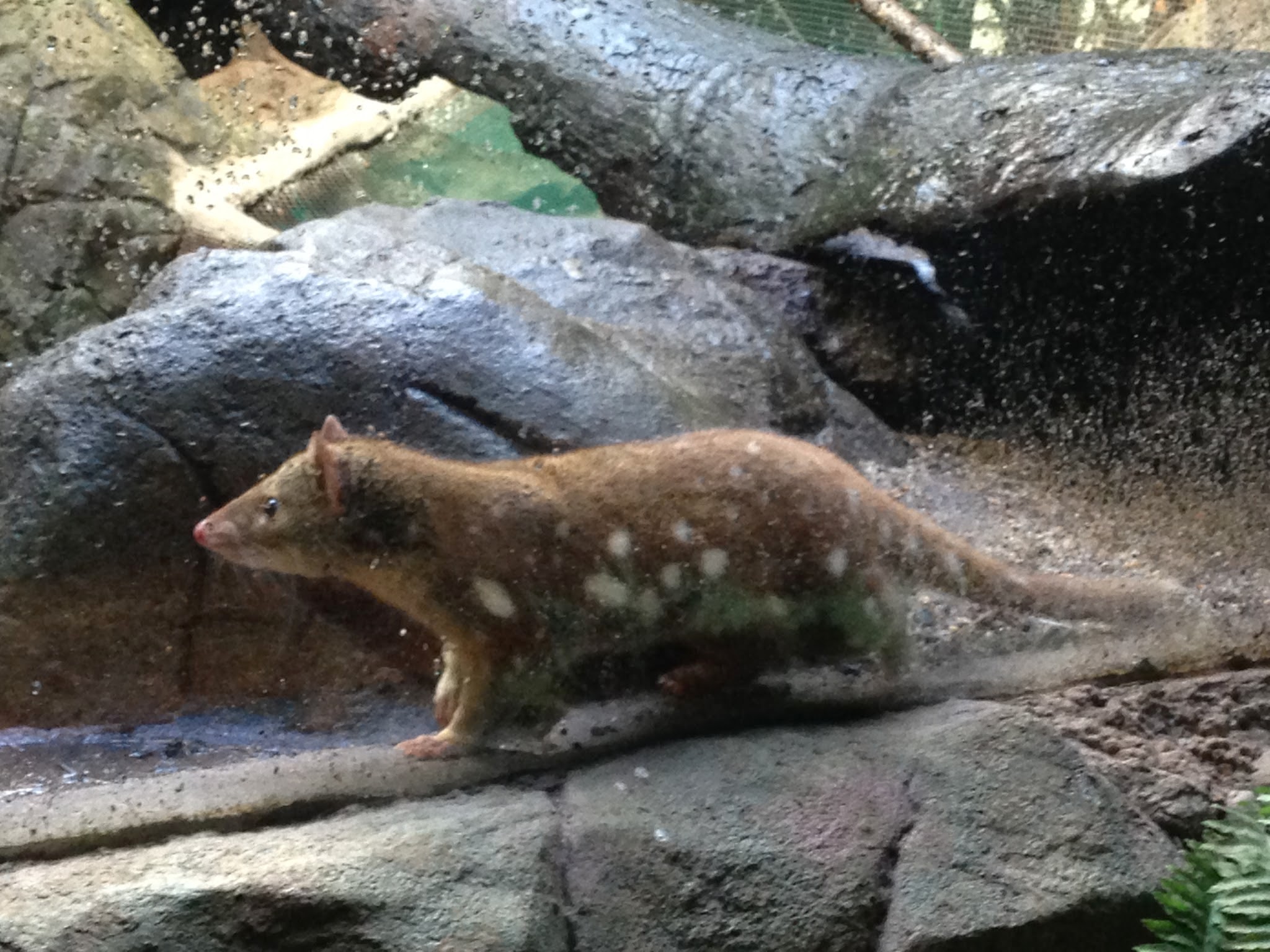This Friday was my first field trip for my Australia's Terrestrial Environment class. Now, this is one of my two favorite classes here so I was incredibly excited to go on the trip, even though it meant a day of missed classes and make up work to do. We bused up to Brisbane Forest Park, which actually is now called D'Aguilar National Park. It is immediately outside of the Brisbane suburb The Gap, so it was about a 30 minute drive from the University. The really cool thing about this park is that it is a mountainous mix of rainforest and sclerophyll forest that is literally edged by the city. So The western portion of Brisbane brushes against rainforest (you can see it above). This is really cool because it means you can get to wilderness really easily from the city. I can't imagine what it would be like to drive 20-30 minutes and be in a National Park at home, I would spend all my time there :)
Anyway after our short drive, we headed into the Park. Our first stop was the Walk-About Creek Wildlife Center, a small zoo where they have lots of animals native to the park. When we first got there our Professor told us that to be aware that a Carpet Python (which was not supposed to be in the exhibit) had gotten into the Kangaroo enclosure, and was laying there digesting a possum. While a lot of people were super freaked out, I was actually really excited to see the snake because pythons non-venemous and I haven't seen a wild one yet. However, by the time we got to the kangaroos the python was gone. We did get to see a bunch of cool animals that were supposed to be at the Wildlife Center.
Our next stop was Jolly's Lookout. This was a gorgeous overview of the valley and the distant city. It was breathtaking. We watched clouds roll in over the mountains, and in minutes the view changed from the first picture above to the second and it started to pour rain. It was a crazy fast change. The past three days had been constant rain in Brisbane, so we were really sad, but eventually it cleared. According to the Aussies the supremely rainy conditions last week were normal for this time of year, in fact those rains were late, they should have happened at the beginning of February instead of the beginning of March. The rain actually broke a drought that the area was currently in, so while us American's were wondering where our sunny 80 degree weather had gone, the Aussies were really relived.
The rain stop us from learning about the geology in the area and how the local rocks were formed. Everyone else thought it was boring, but I was super excited (I know, I'm a nerd). We learned that a good portion of the rocks were igneous rocks from ancient volcanoes. There are no active volcanoes in Australia (only continent without them), but there were in the past. So there is a lot of basalt, gradient and diorite in the area. It was interesting to learn that were the different rock types were there were different ecosystems. I knew this from previous classes, but was really pleased to talk about it here because I've found that any geology has been sorely lacking from the ecosystem science I've been taught here so far. One of the advantages of being a double major in biology I now look at everything with a multidisciplinary perspective. When I look at an ecosystem I always think about the geology, and when I think about geology I always ask how it impacts the ecosystem around it. It was really refreshing to get this prespective from a professor here.
After the talk we were treated to Damper and tea. Damper is traditional Aussie Bushbread that people took with them when they were out working in the bush (Aussie term for wilderness). It's basically dense bread. If you want to read more about it check out my cooking blog here: http://cooking-with-a-k.blogspot.com.au/2014/03/damper.html!
Besides the leeches the entire day was great. It was so nice to be able to get out of the city and see some nature, as well as learn about the local environment around Brisbane. We have 2 more day trips for this class as well as Fraser Island over mid-semester break. Really excited to go now!!!










No comments:
Post a Comment